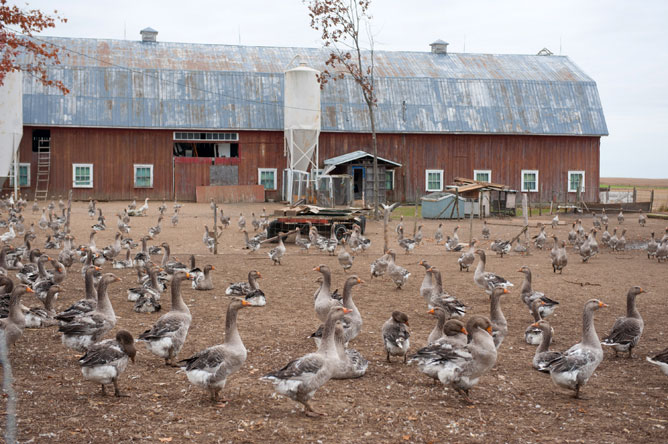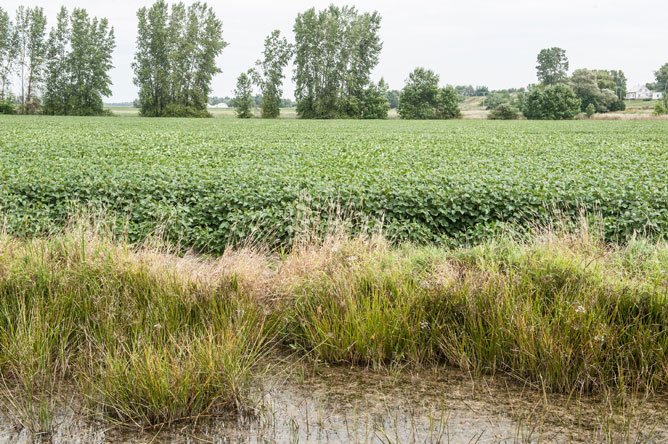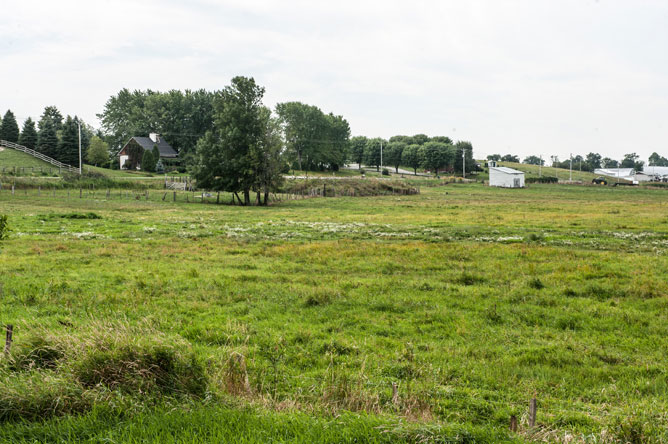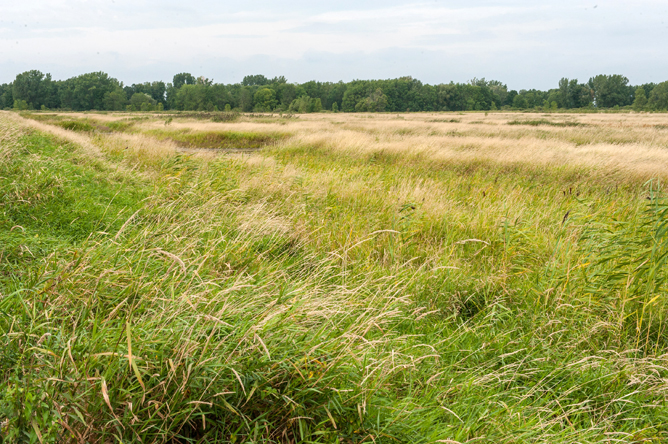Lake Saint-Pierre
On the shores of Lake Saint-Pierre, in Nicolet, Jean Roy, his wife Denise Renaud and their son Nicolas raise thousands of Graylag Geese imported from France. Their agricultural cooperative, Les Jardins de l'Oie, sells a variety of goose products: foie gras, goose confit, potted meats, pâtés and goose meat.

For more information (in French only): Les Jardins de l'Oie
The fertile floodplain of Baie-du-Febvre is ideal for arable crops.

This area also provides high-quality pasture.

This parcel of land is owned by the Société d'Aménagement Récréatif pour la Conservation de l'Environnement du Lac-Saint-Pierre (SARCEL), and is not cultivated. Fish spawn here in the spring, and ducks and geese use it as a rest area during their spring and fall migrations. In the summer, ducks raise their ducklings here.

For more information (in French only): La Société d'Aménagement Récréatif pour la Conservation de l'Environnement du Lac-Saint-Pierre
The community pastures date back to the era of New France. Most were used for grazing livestock, and belonged to the seigneurs. Tenants would pay annual dues to the seigneur (in the form of cash or agricultural products) to pasture their livestock.